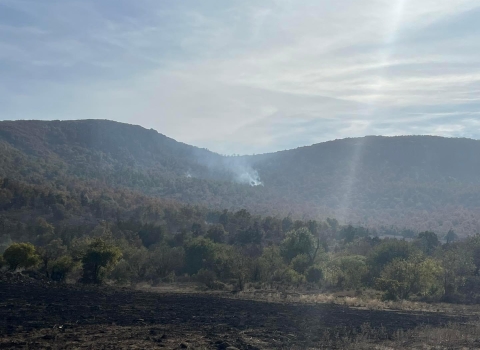MISSOULA – As part of ongoing efforts to monitor grizzly bears in the lower-48 states, the U.S. Fish and Wildlife Service, along with several partners, will be continuing genetic sampling efforts during the summer of 2022 to document grizzly bears in southwest Montana. This project is collecting data to assist biologists in understanding more about the grizzly bears that have been dispersing throughout southwest Montana over the past decade.
The Service thanks the U.S. Forest Service and Defenders of Wildlife for their continuing partnerships from last year and welcomes the addition of Montana Fish, Wildlife & Parks as an additional partner this summer. Additional appreciation is shared for nonprofit partners that have donated resources towards the use of cameras for this project, including the Yellowstone to Yukon Conservation Initiative, Greater Yellowstone Coalition, Natural Resources Defense Council, and the National Parks Conservation Association.
The 2021 survey revealed important information about the presence of two grizzly bears in their historic range near the headwaters of the east fork of the Bitterroot River in southwest Montana. Both bears were determined to be unrelated adult males from the Northern Continental Divide Ecosystem. While there were previously verified sightings approximately 30 km to the south and east of this location, these were the first grizzlies to be documented in this area in recent history.
This non-invasive genetic sampling survey uses temporary barbed-wire corrals and remote cameras, with a scent lure to attract bears to the sites. As bears climb over or under the barbed wire to investigate the scent, their hair collects on the barbs without causing injury to the bear. The hair samples collected are then used for genetic analysis. The scent lure provides no food reward and thus no motivation for bears to linger at the sites. All areas where work is being conducted will have primary access points marked with warning signs; the public is asked to avoid the area if they come across a site.
The project is taking place on National Forest System lands in southwest Montana, between the Bitterroot recovery zone and the estimated current distribution of populations in the Northern Continental Divide and Greater Yellowstone Ecosystems. The primary study areas include the Beaverhead Mountains, Pioneer Mountains, Pintler Range, Anaconda Range, Flint Creek Range, John Long Mountains, Sapphire Mountains, Lower Clark Fork, and Ninemile Divide. Sampling sites will be located away from roads, campgrounds, trails and will avoid other areas with high human use. All sampling sites are signed to notify anyone in the site’s immediate vicinity and include contact information for the Grizzly Bear Recovery Program.
Defenders of Wildlife developed a video about the operational aspects of this project and can be viewed here: A Day in the Life – Monitoring for Bears in the Bitterroot. More information about grizzly bear conservation and biology can be found from the Interagency Grizzly Bear Committee.
Residents and visitors to grizzly bear country are encouraged to remain bear aware, know how to use and carry bear spray, and to never feed or approach wildlife. Learn more about bear safety.





